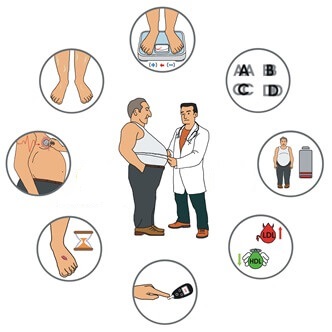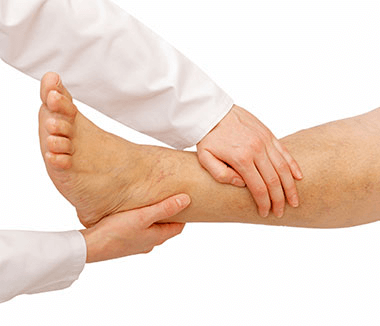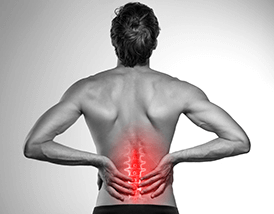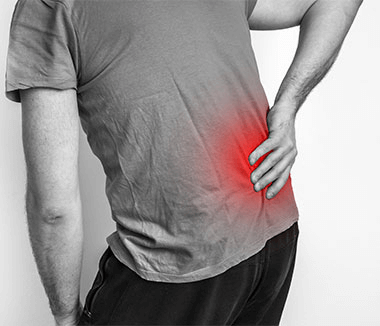See details
READ MORE
What is transcranial electrical stimulation?
Transcranial electrical stimulation is gaining more and more ground nowadays, being a therapy with very good results in many neurological diseases, but also for improving sports performance, or for increasing intellectual capacity.
It can be used in neurological disorders as first-line therapy, or in combination with drug treatments, and remains an alternative if patients acquire drug resistance or have not obtained favorable results with existing classic treatments.
In an interview with a National Geographic documentary on transcranial stimulation, the brilliant physicist Stephen Hawking said that "probably in the next 20 years, this type of therapy will be used by the vast majority of people and will be an important step in the evolution of the human species because it will help in the discovery of brain functions that could accelerate the processes of healing, memorization ... ".
Transcranial electrical stimulation (TES) is a simple, painless method of treatment that uses an electric current of around 1mA, and induces long-lasting positive brain changes.
The basic idea behind transcranial electrical stimulation therapy is a simple one: practically a low frequency current, generated by a battery is delivered to the brain using electrodes of different types and sizes. The electrodes mounted on the scalp will deliver the current on the cortical area of interest, the current being subsequently recruited by other electrodes (return) which can also be positioned on the head or alternatively, on the neck. Through the electrodes, the device generates low frequency currents and electric fields (measured in V / m) on the brain. Basically, these electric fields are those that modulate neural activity, producing excitability or inhibitory effects of neural activity, but also produce long-lasting plasticity effects, involving synaptic changes. Basically, this aspect emphasizes in the most obvious way, the clinical utility of TES therapy.
What are the indications for tES therapy?
Strokes
TES therapy is a promising option for the recovery of patients who have suffered a stroke. Current studies suggest that TES, in language-related areas of the brain, may modulate language skills in healthy individuals and may improve speech performance in patients with aphasia, a side effect after stroke. The results are very important for improving patient’s quality of life. TES combined with rehabilitation techniques is a promising therapeutic option for mobility and language disorders (aphasia) that occur after a stroke.
.jpg) | .jpg) |
Headache (migraine)
It is one of the main causes of disability worldwide. TES reduces the intensity and frequency of migraines.
Depression
Imaging studies show asymmetric activity of neuronal populations in the prefrontal cortex of patients with depression. In the left hemisphere (in the dorsolateral prefrontal cortex, DLPFC) neural activity is reduced. TES on DLPFC can improve neuronal excitability, overcoming depression. In several studies, An important antidepressant effect has been observed after 10-15 treatment sessions. Currently, TES is one of the most effective methods of treatment of depression in the world.
Anxiety
Anxiety is one of the most common psychiatric disorders in the world. Until now, pharmacotherapy and psychotherapy have been used in the treatment of human anxiety. However, either alone or in combination, unsatisfactory outcomes are predominant, leading to a considerable number of people whose symptoms fail to respond to conventional therapies. The demand for new therapies has given rise to several non-invasive brain stimulation techniques. Transcranial electrical stimulation (TES) has emerged as a promising treatment and has proven to be a safe and well-tolerated method for the treatment of many diseases, including chronic headaches, depression and anxiety.
Tinnitus
Tinnitus is the perception of sound in the absence of any external acoustic stimulation. TES has shown promising therapeutic results for tinnitus. There are numerous studies showing the effects of TES on tinnitus suppression.
Personality and behavioral disorders
Despite psychopharmacology advances and established psychotherapeutic interventions, over 40% of patients with obsessive-compulsive disorder (OCD) do not respond to conventional treatment approaches. Transcranial electrical stimulation (TES) is an important treatment for relieving treatment-resistant symptoms in patients with OCD, such as depression and anxiety.
Improving cognitive functions
The cognitive decline associated with aging can be fought by transcranial electrical stimulation. There are certain proofs that the cognitive training using tES is one of the most promising treatment methods available in the world at this moment. Our medical team will encourage you to be proactive regarding the cognitive health of your brain, which will bring you real success in building the cognitive capacity.
Improving sports skills and performance
There are encouraging studies conducted in the USA and Japan that have shown favorable results in high performance athletes. Transcranial electrical stimulation induces arousal in the cortex, which leads to decreased perception of the athlete’s effort.
.jpg) |  |
How long does the treatment last?
The treatment consists of 10 to 20 sessions, which can be performed over a period of 2-3 weeks, but it can be followed by a period in which our medical team can recommend 1 maintenance session per week, this being important in maintaining the benefits obtained.
The most common intensity level used to stimulate TES is 2mA and the duration of one session is considered to be 20min, the number of sessions being established depending on the pathology and the severity of the disease. There are already numerous treatment protocols, especially regarding the treatment of depression.
Currently, Centrokinetic has the most complex device in the world, with its help being able to stimulate any cortical area , and the impedance of the current can checked in real time, which is a major safety factor for the patient.
The most spectacular and important features of this device are portability, because it is a WiFi device (so other therapies can be performed including exercise simultaneously), and the fact that it is a hybrid device, because it can perform simultaneously or in turn, electrical stimulation and EEG recording, the device having this integrated feature. Informations provided by this device are complete, both about the delivery of electric fields and the impact on the brain system.
Are there any side effects?
The literature lists several side effects caused by electrical stimulation such as: migraine (headache), phosphene, local erythema under the electrodes (irritation at the site of electrodes). It is worth mentioning that they were minor.
A major difference is made by:
- the type of device used - as not all allow real-time visualization of the impedance between the electrode and the skin
- the material of the electrodes - those used by our medical team are silver electrodes, a material that reduces the risk of burns or other unpleasant events to 0.
Throughout the stimulation, the patient is monitorized by our medical team, which directly analyzes the progress and parameters of the stimulation through a software installed on a laptop, this software having the ability to stop the stimulation if it finds any risk in current delivery.
Dr. Edis Mustafa , a medical recovery specialist, is specialized in tES therapy, treating more than 200 patients , and none of them had any side effects. Dr. Mustafa did his doctorate in tES therapy, being the most experienced doctor in Romania.
.jpg) | .jpg) |
Dr. Edis Mustafa confidently recommends this new therapeutic approach, having exceptional personal results similar to those in various international studies published so far.
You can find here a detailed list of the prices for transcranial electrical stimulation (tES) services. But any correct recovery process is based on a mixed plan of therapies and procedures, customized according to the condition, stage of the condition, patient profile, and other objective medical factors. As a result, in order to configure a treatment plan, with the therapies involved and the prices related to the plan, please make an appointment here for an initial consultation.
About Centrokinetic
Centrokinetic clinic offers all services necessary for a complete rehabilitation process, from the first consultation to the medical specialist to establish the correct diagnosis, to treatment and recovery.
Centrokinetic is the place where you will find clear answers and solutions for your motricity problems. The clinic is dedicated to osteoarticular conditions and is divided into the following departments:
- Orthopedics, a department composed of an extremely experienced team of orthopedic doctors, led by Dr. Andrei Ioan Bogdan, primary care physician in orthopedics-traumatology, with surgical activity at Medlife Orthopedic Hospital, specialized in sports traumatology and ankle and foot surgery.
- Pediatric orthopedics, where children's sports conditions are treated (ligament and meniscus injuries), spinal deformities (scoliosis, kyphosis, hyperlordosis) and those of the feet (hallux valgus, hallux rigidus, equine larynx, flat valgus, hollow foot).
- Neurology, which has an ultra-performing department, where consultations, electroencephalograms (EEG) and electromyography (EMG) are performed.
- Medical recovery for adults and children, department specialized in the recovery of performance athletes, in spinal disorders, in the recovery of children with neurological and traumatic diseases. Our experience is extremely rich, treating over 5000 performance athletes.
- Medical imaging, the clinic being equipped with ultrasound and MRI, high-performance devices dedicated to musculoskeletal disorders, and complemented by an experienced team of radiologists: Dr. Sorin Ghiea and Dr. Cosmin Pantu, specialized in musculoskeletal imaging.
Find the latest news by following the Facebook, Instagram and YouTube accounts of the Centrokinetic clinic.
SUCCESSFUL RECOVERY STORIES

MAKE AN APPOINTMENT
CONTACT US
MAKE AN APPOINTMENT
FOR AN EXAMINATION
See here how you can make an appointment and the location of our clinics.
MAKE AN APPOINTMENT













































































































































